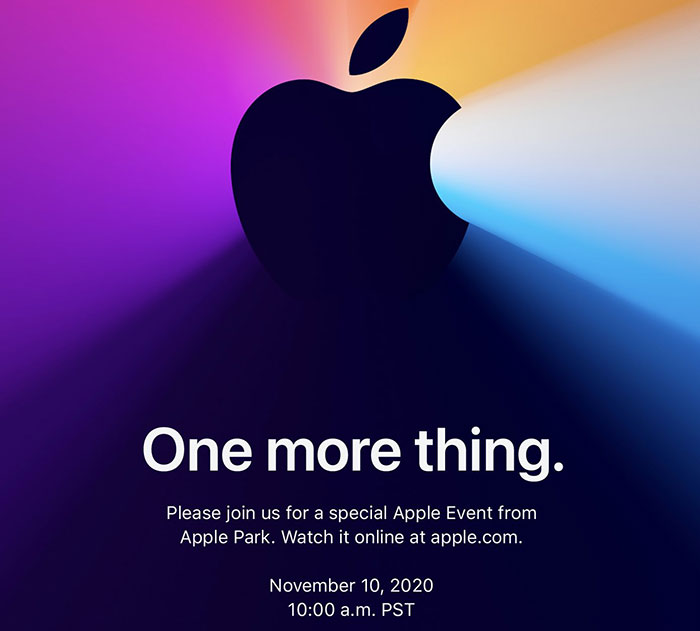On Tuesday, 10th November, Apple is hosting its One More Thing special event. With its recent iPad and iPhone events done dusted and documented everyone expects to see the first 'Apple Silicon' Macs arrive. Bloomberg's tipsters added weight to these rumours by saying there will be two or three Arm-powered Macs launched on Tuesday. If it is just two devices they are likely to be a 13-inch MacBook Pro, and a new 13-inch MacBook Air, put together by Foxconn. If three devices make the cut you can add a 16-inch MacBook Pro made by Quanta to that list.

Apple revealed the Apple Developer Transition Kit earlier this year which is a Mac Mini like platform created to help developers get a grasp of the new platform. Inside the DTK is an A12Z CPU, which uses tech from two years or more ago. In June some Geekbench results for the DTK leaked onto the net. However, the first 'Apple Silicon' Macs being made available to consumers will be powered by the 5nm A14X Bionic, a modified version of the chip in the latest iDevices.

How much better is the Apple A14X Bionic? Thanks to some digging by Apple Insider we might have some useful clues to what to expect on Tuesday. The Apple-focussed news site discovered some A14X Bionic Geekbench 5 single and multi-core runs and compares them to the results you can get using other Macs and iDevices. I've put Apple Insider's results into a table below:
|
CPU/Platform |
Geekbench 5 single |
Geekbench 5 multi |
|
A12Z |
1,118 |
4,657 |
|
A14/iPhone |
1,583 |
4,198 |
|
A14X/Mac |
1,634 |
7,220 |
|
Intel Core-i9/Mac |
1,096 |
6,869 |
Cross platform Geekbench 5 comparisons aren't very pleasing to many. However, if the results are genuinely from the new Apple Silicon Macs at least they provide a significant uplift as compared to the leaked DTK results and you can see a significant hike in multi-core performance vs the newest A14-packing iDevices.
One other thing to bear in mind is that many existing apps and benchmarks will be running under Rosetta 2 emulation technology but Apple will likely be pushing developers to provide native apps ASAP, as it did for prior architecture transitions.













